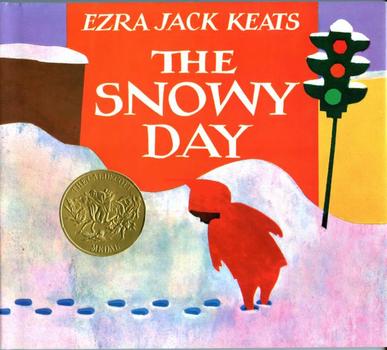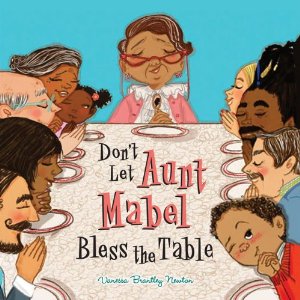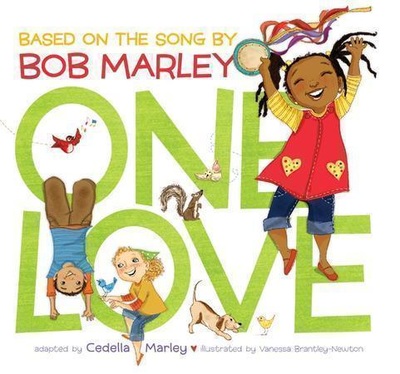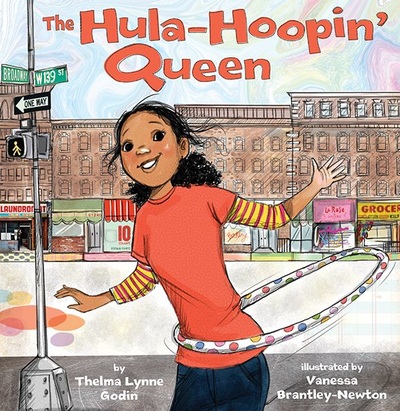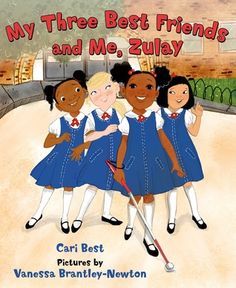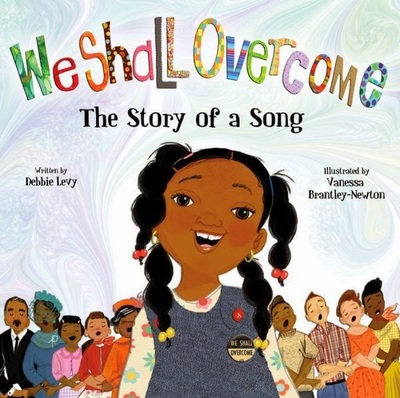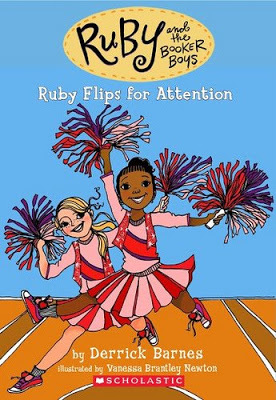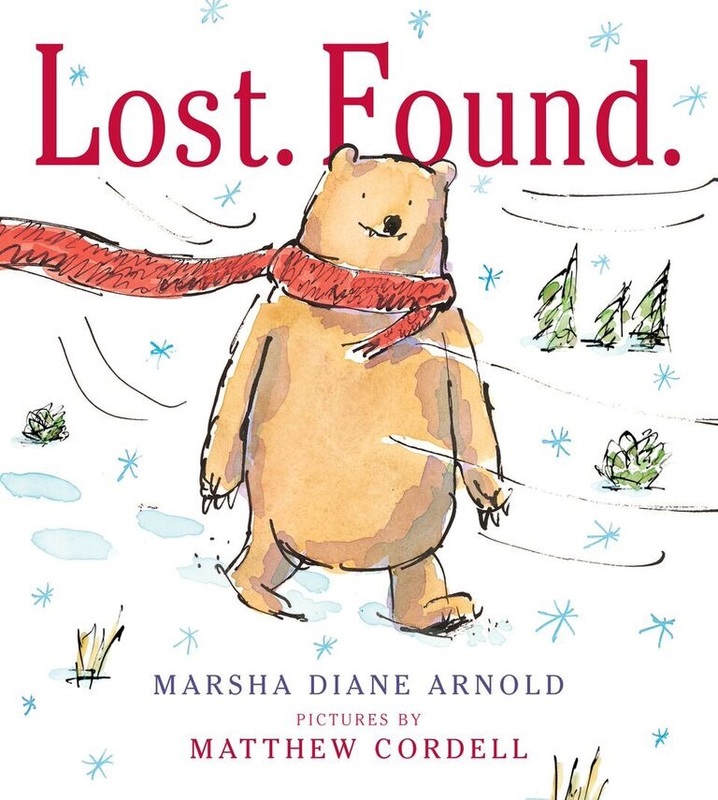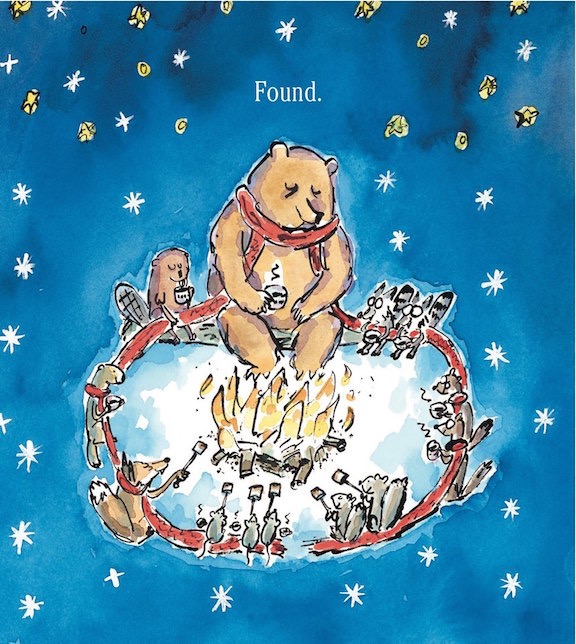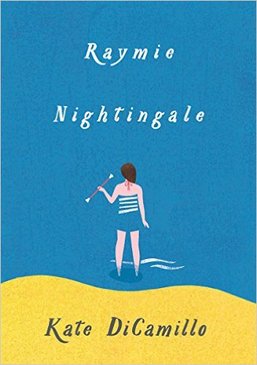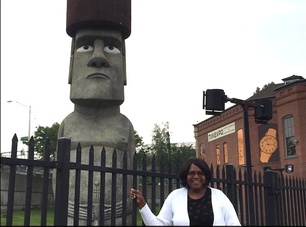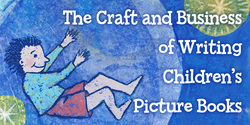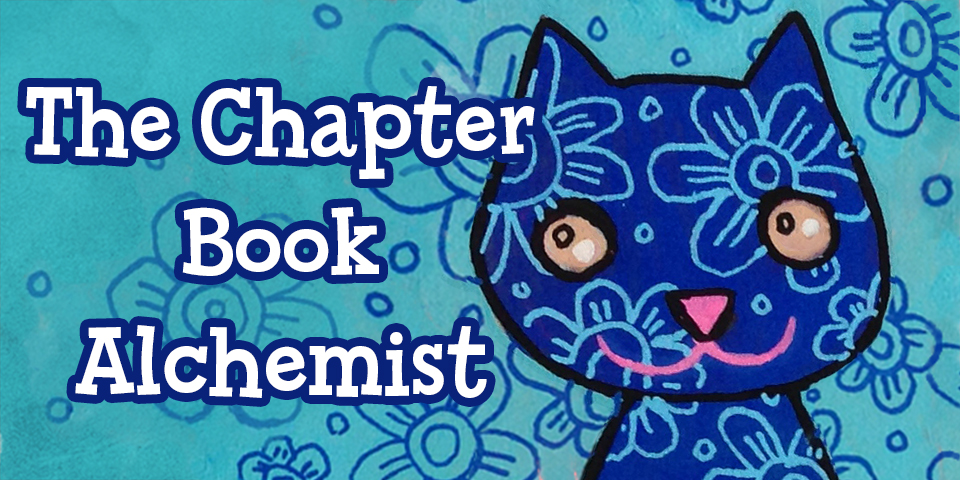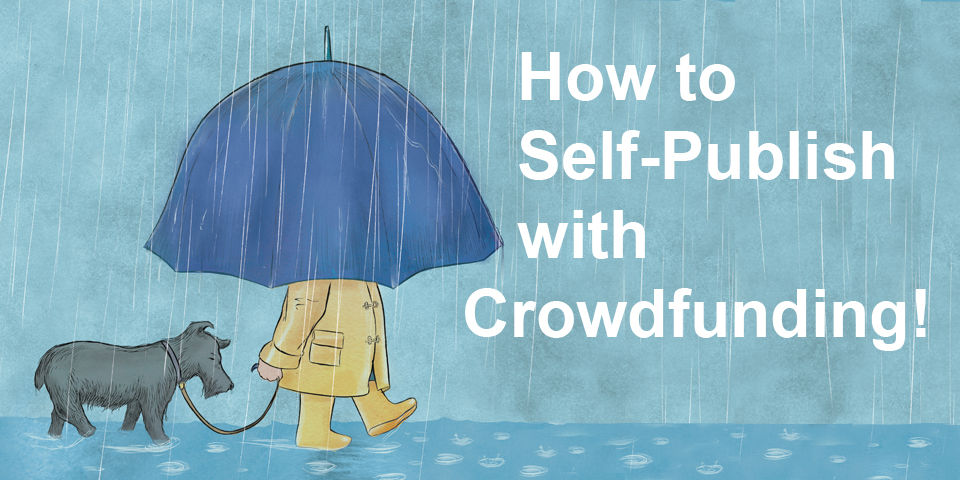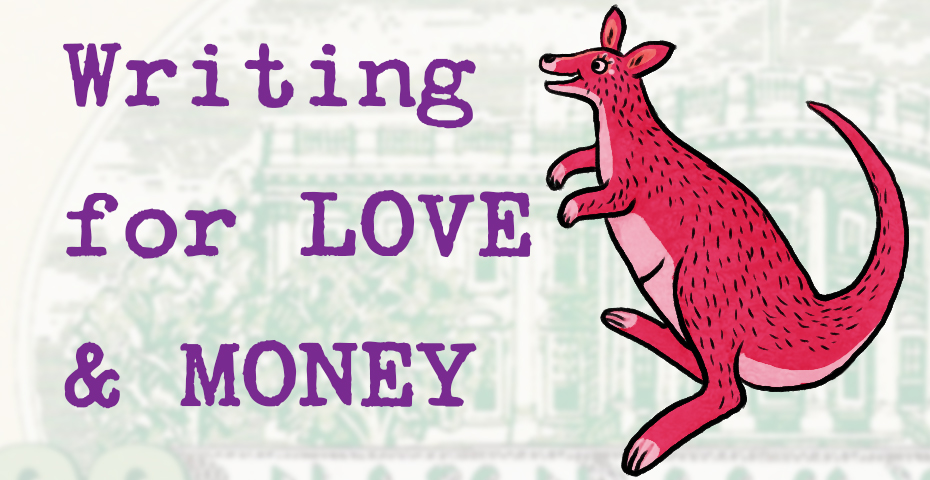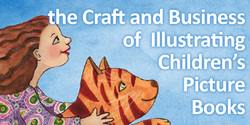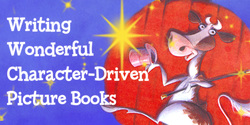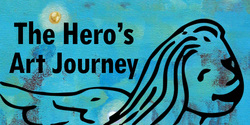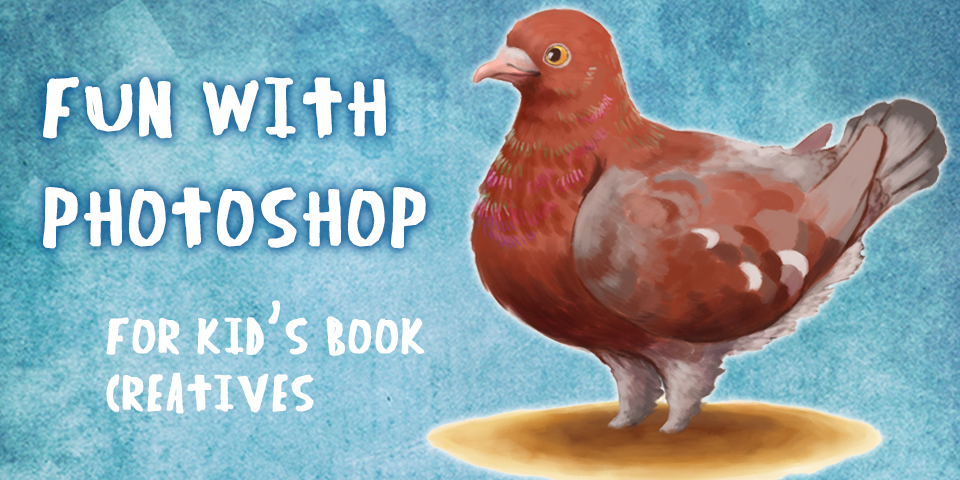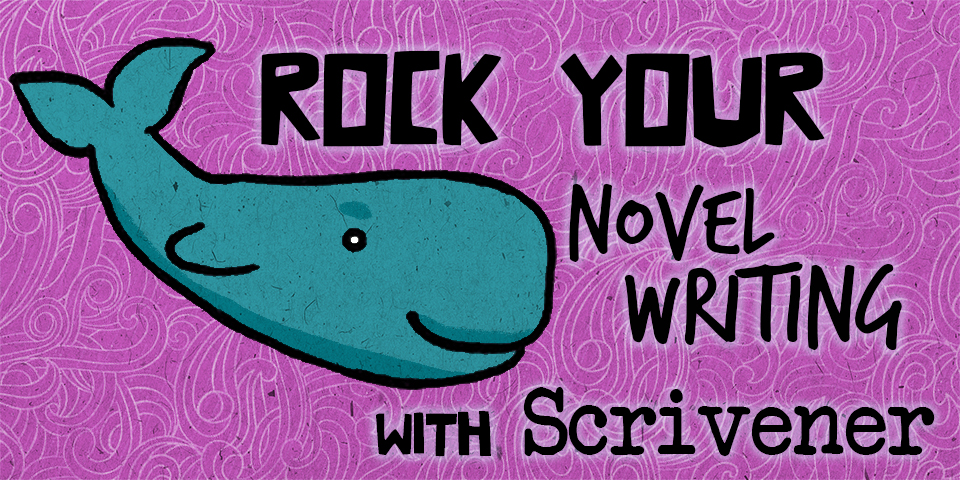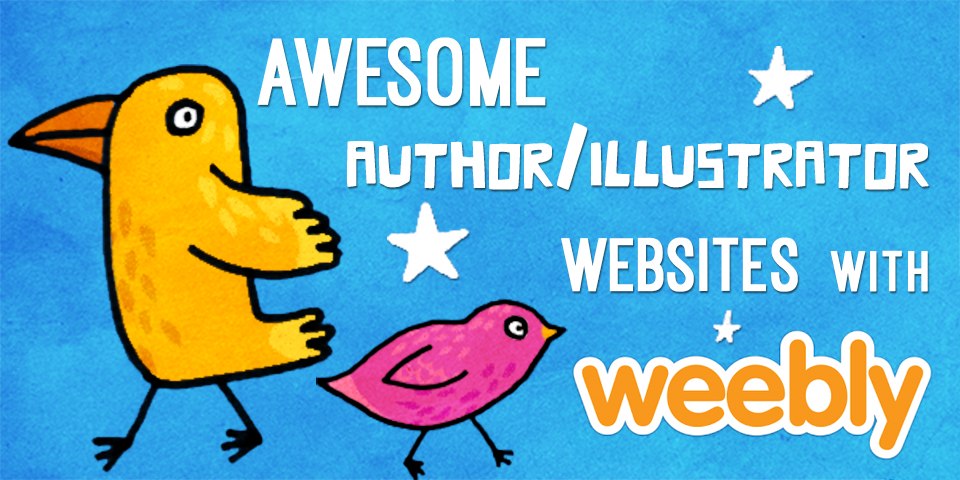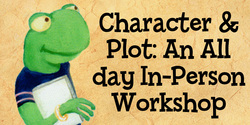 So - about that story. You know - the one that's been buzzing around in our mind for months or years. You finally have the courage to put pen to paper (or hands on a keyboard) and there it is - your baby laid out in black and white. Revision means tweaking the dialogue, massaging the dialogue tags, and eliminating those pesky double spaces after a period. Only the story feels hollow. You know it in your gut but you reward yourself for finishing the project. It's an accomplishment. You NaNoWriMo'd the heck out of it. The protagonist has a goal. He or she reaches for it, like the prized fruit high up on a tree. And they get it. Easily. Because that's what you - the author - wanted for them. Aren't you proud. But is that what the character wanted? It's a classic problem I see when I critique something. The author had one agenda but the character had another. So the author fashioned a lasso and kept the character in line. And in doing so fails to understand what motivates the character. Fails to know how they will react to a failure and what they do to improve it. So this is a short blog - because honestly - many writers read blogs hoping to get "the answer" but it's not that easy. So I'm going to give you a few short tips to help you on the journey: 1. The story isn't about you, Children today aren't the same children that existed when you were a child. The technology changes rapidly and the media leaves them exposed to much more information (some of it not so good) than we had. If you are not surrounded by the age group you are writing for, go volunteer at a school or local community gathering. Eaves drop in public venues. Get a feel for rhythm and pattern. Then let go and let the character talk to you.f 2. Show AND Tell, (but skip the agenda) We often hear "show, don't tell" but a wise editor I once said a story is a little bit of both. You write a story then substitute exposition for more subtle clues such as an expression, or a lilt in the voice. Sometimes you can't do that and have to overtly explain (lightly with a feather) what is happening. It's a balancing act. A duet between you and the character(s) appearing on the page. Still, many books fail because aspiring authors already "know" the journey and want to teach a lesson. Those books don't sell.f you've got a lesson it better be subtle but honestly - characters are not actors you hire to perform your pre-written script. They have their own agendas and it may be better than yours. So agaiin - let go. It isn't about you. The characters are not you (or your kids, or relatives, or neighbors - unless this is a memoir then - oops - ignore this section). You may have high hopes for your character's path, but like real kids, they may end up going down a different path. And that's okay. 2. Rhythms matter. A child that lives in New York isn't necessarily going to have the same rhythms as someone who grew up in Kansas. My children don't sound like their counterparts in the next town over. There is a lot that goes into rhythms, none of it easy to define. Know your character's rhythms and make sure there are many in your book for readers to latch on to. In a family, there are different rhythms though they may be close or similar. Beyond that, if everyone in a book sounds like you, well - there's work to be done. Here's a link to a blog article I did using music videos to explain what I'm talking about: https://christinetaylorbutler.wordpress.com/2015/06/25/be-brave-enough-to-be-happy/ 3. Voice Matters. It is common for characters to begin to sound like "mini-versions" of the author. That's a non-starter. And sometimes all the characters sound like the same person with different names attached. Stop. Don't pass go. Read #2 above. Get into the heads of your character and see life through their eyes. Even secondary characters have a lot to tell you that won't make it into your book in an overt way but will greatly strengthen your narratives. Voice is not just about what a character says, but how they say it, why they say it, and when they choose to say it. 4. Stop protecting the character (and yourself) from difficult situations. Books are about emotion. Even in books about love or great adventure, books are about emotional responses from readers. Get into the heads of the characters, even the secondary characters. If that's scary to you, then it's a good sign. It should be. Remember? Being a child or teen with all the conflicting emotions that come with it is a joyful place. It's also fraught with fearful things none of us ever wants to repeat. So here's some advice. Read. Read. Read. Note how your favorite authors handle dialogue, characterizations and plot. Not how different the styles are, then look for commonalities. Read a second book by the same authors and see if there is growth in skill. If the voices of a different cast of characters have their own spin. Bookmark pages where the author handled something well that you're struggling with. Then read: Stephen King's "On Writing" and Anne Lamotte's "Bird by Bird." Because in the end - they both point out that your first and second drafts of a book are for your own edification. They are the "down" draft meant for your eyes only. You're still in "Training" no matter how many books you have under your belt. Your characters for this book have different ideas for you than those in previous books. So write your heart out without editing. When finished (and only when finished) go back and revised - again for only your eyes. By the third draft you'll know the characters well enough to see if you've let go of your own agendas so they can take you on a journey. If they surprise you, thrill you, and tell you stories you didn't know before you started. You'll surprise your readers too. 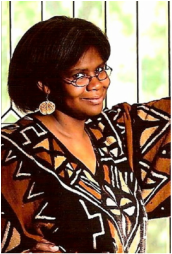 Christine Taylor-Butler is the author of more than 75 books for children. Her current passion is her contemporary sci-fi/fantasy series The Lost Tribes and its upcoming sequel Safe Harbor about five children who learn they play a role in saving the world. When not writing, she is a freelance editor, and community volunteer. She's also a closet ballroom dancer, artist and personal servant of a cat and tank of fish. You can find her on Twitter: @ChristineTB Facebook: ChristineTaylorButler.ChildrensAuthor, or www.ChristineTaylorButler.com.
0 Comments
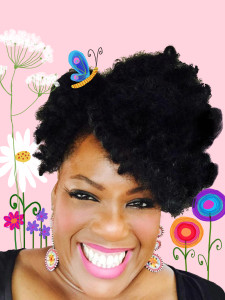 A few weeks ago, I attended the New Jersey SCBWI annual conference. The main theme of many workshops was diversity. Whether it related to the LGBT community, race, culture, or disabilities, a wide array of topics were discussed. I had the pleasure of listening to and meeting the wonderful and incredibly talented Vanessa Brantley-Newton, who has written and illustrated a library full of books related to diversity, either by subject or with diverse characters. During her presentation, she spoke about her journey as a child, growing up seeing mostly white characters and also African-Americans portrayed in a negative light in books and other visual media. But all she saw around her were her loving family members and friends, of all races, cultures, and religions, the likes of were nowhere to be found in books. 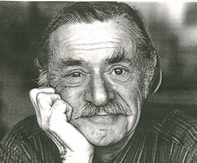 Vanessa then explained her greatest inspiration - Ezra Jack Keats, one of my heroes in children's books, too. She explained how he was the first to represent a character of color in a picture book with Peter in "The Snowy Day" back in 1962. Seeing a child that resembled her, that looked like the people that she knew changed Vanessa's life. And now, she is inspiring us with all of her diverse characters in so many ways. Vanessa's speech touched my heart, as well as many others in the room. She became emotional talking about her childhood and the joy she felt to see Peter and other characters that Ezra Jack Keats was featuring in books. She brought a tear to all of our eyes because it was a testimony of how much of an impact books can have on children. You see, we often talk about adding diversity to children's books but we don't always understand why, and what the impact would be on children of color and of all types and backgrounds. When a child reads a book, he or she wants to relate to the character and the story. They want to feel a meaningful connection to the story, so much that the book will become a part of their memory bank for the rest of their lives. We authors and illustrators want children to love our books, to have that desire to read the books over and over again. But that won't happen if they can't connect to the book. Vanessa is a strong advocate for We Need Diverse Books. Her presentation was probably the most heart-warming, most down-to-earth talk about diversity that I've heard yet. She has forced me to continue to think of ways to showcase our diverse population in books.
Just like Ezra Jack Keats inspired both of us, Vanessa Brantley-Newton has become my newest inspiration. My three-year-old granddaughter doesn’t believe in stopping. “Try again” is her battle cry. She must say it twenty times a day, to herself and those around her. “Try again,” she says to grandpa when he misses the ball. “Try again,” she encourages when I burn the cookies. “Try again,” she tells herself when her block tower collapses. I’m in the “try again” camp too. With life, I believe in keeping on. Consider the time I was running my first half marathon and broke my foot with several miles to go. Did I stop? Never. I hobbled along until I saw that finish line, then sprinted into a full out run. But there are times it’s important to know when to stop. It might have been a good thing if I’d known when to stop during that half marathon. Knowing when to stop if you’re a writer is a good thing too. This blog isn’t about stopping when you feel like it, the way you feel after a rejection, a bad review, or when everyone in your critique group thinks your story should be on life support. Those are the times we should “try again.” It’s when we don’t feel like stopping that we probably should - when we want to add one more twist to our story, one more character trait, one more plot line, one more ending. I confess, as a writer, I have a hard time knowing when to stop. That may be difficult to believe looking at my eighteen word Lost. Found. You may have thought I barely got started. Yet much of my writing looks like I’m on a trip around the world with no particular destination in mind. Some of my picture book manuscripts, which editors prefer to be under 500 words, look a bit like the “Great American Novel.” I’ve learned a few things in my time on earth and, doggone it, I want to get it all in that manuscript, that one manuscript. Besides writing “picture book novels”, I’m also good at multiple endings. I can’t choose just one! Usually, I like my stories to have at least three, in the style of “Choose your own ending.” Creating multi-dimensional characters is one of my talents too, but multi-dimensional characters aren’t needed in picture books. They just complicate matters. I’m working on a story now where my character loves wordplay, but he’s also shy. More than half of my critique group agrees that the addition of shyness as a characteristic takes the story off track. Another example of not knowing when to stop, especially for novel writers, is saying the same thing over and over again. This habit of repeating oneself comes largely from not trusting your reader. Sadly, these repetitions can sometimes find their way into a published novel. That doesn’t happen with an accomplished writer though. I recently finished Kate DiCamillo’s Raymie Nightingale. I don’t know if Ms. DiCamillo has trouble knowing when to stop, but I doubt it. And if she does, her finished novel doesn’t show it. Perfect number of words. Perfect number of chapters. Perfect book. Kate DiCamillo knows what to leave out and what to keep. She knows when to stop. Perfectly. Of course, our first drafts are often wordy with too many characters and plots and endings, but when we begin to rewrite we need to learn when to stop, where to cut, and when to “kill” our darlings, the parts we love the most but that don’t add to the story. “Try again” should certainly be a writer’s main battle cry; it has to be with all the wrong turns, rejections, and disappointments we come up against. But we should also learn about the important discipline of knowing when to stop. Know when to stop so you don’t have three endings. You only need one that’s perfect. Know when to stop adding dimensions and attributes to your picture book character. One main characteristic is good. Know when to trust your reader. And, oh yes, know when to stop working on your blog and start writing your story. That’s my exit line. (Though, I'm exiting, I'd love for you to share your experiences with the importance of stopping.)  Marsha Diane Arnold is the award-winning author of twelve books that have sold over a million copies. Her most recent, A Welcome Song for Baby, portrays a young girl sharing the sounds of the seasons with the baby in her mother's womb. It's available in the UK and at http://amzn.to/1VVbVOt Marsha's popular Character-Driven online Course is at http://www.childrensbookacademy.com/writing-character-driven-stories.  In March I returned from a trip to Washington, D.C. Where We Need Diverse Books was presenting its first annual Walter Dean Myers Award for literature at the Library of Congress. I was a judge so it made sense to be there. As luck would have it, the airfare into Washington’s Reagan International was inexpensive - . just about $100. The cost to fly out - almost four times higher. If I waited and took a $49 Amtrak train to Newark I could fly out a few days later for $112. I decided to think like a starving artist and make the trip do double duty. I took the money I would have had to spend on the higher airfare and extended my discounted stay at the DC hotel (which was within walking distance of everything). I used the time to explore scenes in my book and do research. Example: In Safe Harbor my protagonist plans to steal an diamond from the Smithsonian Museum of Natural History. In a previous book he’d seen his father plan the heist of a jewel from the British Museum. Armed with floor plans and virtual tours I knew the Smithsonian like the back of my hand (excuse the lazy cliché) - or so I thought. 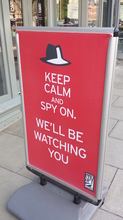 While in D.C. I took a side trip to the International Spy Museum. If you’ve never been, it’s a fun day trip even if you’re alone. There are rooms upon rooms devoted to actual spy gadgets used in various wars. There are also simulations to try and a few puzzles sprinkled in. I failed miserably at spotting hidden aircraft from satellite data (even with hints). You can choose a fake identity (optional) and if so must learn your dossier in order to pass various checkpoints where you’ll be quizzed on who you are and where you’re going. I passed the checkpoints with no errors and no notes (which the guard hinted would be cheating if I did.) Along the way I took copious notes about objects or strategies I could stuff in my sci-fi toolbox.  The next morning was spent at the Air and Space museum. If you’re going to have a secret outpost it would make sense to look at the technology developed by government agencies. For example: what do satellites look like up close? When I arrived, the museum was showcasing a kite demonstrations. It was fascinating to see what the guests could do with flight in the absence of moving air - graceful and silent. Even when the kites were huge their handlers caused them to float and swoop gracefully to music. But kites (and possible uses for Safe Harbor) aside, I had a burning question: What do you do if you can’t install normal bathrooms in your secret hideout and have to recycle all the team's waste? Seeing the space station bathroom up close provided a lot of fun - and gross - things to add to my book's bathroom descriptions. Can't have a book without adding "gross-out the kids" items! 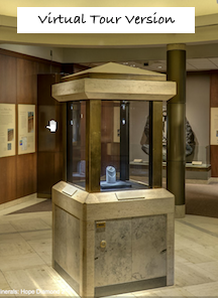 And then, finally, the prize. I headed to the Museum of Natural History where I quickly found the Hope Diamond. It was exactly where I knew it would be. Near the IMAX Theater I described and a room filled with dinosaurs. Only the diamond was surrounded by hundreds of people, all crowding to get a look. Literally hundreds. The problem with using virtual tours for writing “down” drafts is virtual tours rarely show people. I intentionally had my protagonist go during the day since I couldn’t just go up to a guard for research and say “So what kind of security are you using at night to protect this building if - say - a couple of clueless teens decided to break in?” I mean - years ago you might be able to, but to get into the Smithsonian now you have to be searched and go through metal detectors. So tempting fate is not a good career move. This is fiction, after all, but I called my poor long suffering editor and told her that bad news. Yes - both the publisher’s copy editor and book designer were almost finished with final layout for the Advance Reader Copy, and a press run was looming but I had to adjust the scene to account for crowds of people who might see or overhear them.  And it was a good decision, because it forced the characters to shift strategies and made for a more interesting turn of events. Luckily my editor knows how I work and is supportive. I once attended a retreat in Europe and stayed a few days extra to explore the British Museum. As with the MNH - virtual tours don’t begin to inform on the size and scope (or even urban location) of a living breathing place. I walked the same path as my characters then too. The scene ended up on the cutting room floor, but it doesn’t mean I can’t use it later. Certainly my character’s exploration of the Vatican Museum in book one (or as my children called it - the Artwork version of "Hoarders") came because of a visit there. That being said - I’m reading a lot of manuscripts from writers who are crafting contemporary (or historical or fantastical) worlds. In many cases they’re making it up from their imagination or from their own memories. But that is not always an effective approach. When we write - we’re transporting readers to places they may never see for themselves. We have a duty to create landscapes that are living breathing characters of their own. You can’t do that from your chair. Well, okay, there is an exception. In Safe Harbor, on the way to the Smithsonian, the characters make a few mistakes and go to the wrong places. In those cases I’m able to follow them on Google Maps and on several other World Map sites that allow me to get a glimpse of the terrain, the texture of the landscape, and determine the ambient weather conditions at that time of year. And I have the DVD set of every Nat Geo magazine from the late 1800’s. I use those tools when my pitiful travel budget fails. But nothing . . . . NOTHING . . . is an adequate substitute for getting out of your chair and immersing in an environment that is outside of your comfort zone. That includes those in your contemporary stories. Go to those locations and smell the air. Close your eyes and listen to the ambient noise. As my editor once coached in a writing class - go to a thrift store and buy the clothes of your characters. Feel the fabric in your hands. Sip the drinks, smell the coffee, lie in the grass. If your story is historical - go to a museum and just sit. Study the exhibits - the papers, the books, even the eating utensils. Look at the tiny patterns formed in the artwork of a ceramic bowl. Or the breadth of a gigantic frieze and imagine who might have crafted it. Be one with your environment so the details will infuse the atmosphere of your book. Your writing will be better for it. And so will your readers.
|
Meet the Friday Blogonauts
First Fridays will feature Bryan Patrick Avery, published writer , man of mystery, and professional magician among other things.
Second Fridays will feature awesome multi-award winning author Marsha Diane Arnold who will be writing about character-driven and/or nature-based books and/or anything she likes :) Third Fridays will feature independent Aladdin/Simon & Shuster editor Emma Sector who has helped bring many books into the world. Fourth Fridays will feature the great Christine Taylor-Butler who has published over 70 award-winning fiction and non-fiction and nonfiction books including the acclaimed new middle grade series - The Lost Tribes. Fifth Fridays will feature the fabulous Carl Angel award-winning multi-published Illustrator and graphic designer. Join our Tribe
and receive 7 Steps to Creative Happiness, access to free webinars, and lots more!
Your email addresses are always safe and respected with us. Follow our Blog!
Archives
January 2019
Categories
All
|
|
Discover
|
About Us
|
Join Us
Join our Community and receive a fabulous free gift, KidLit tips, newsletters, scholarship info, contests, and more!
Join our KidLit Mentorship |
Social Media
Interact with our FaceBook Group or follow us on:
|
© 2010-2024 All content on this website is copyrighted. Sorry, all courses are non-refundable.
